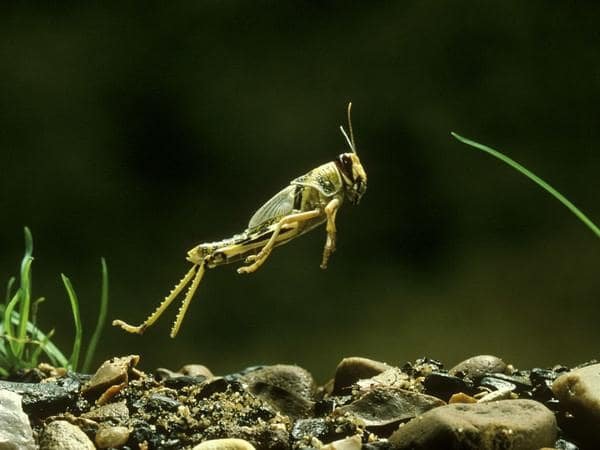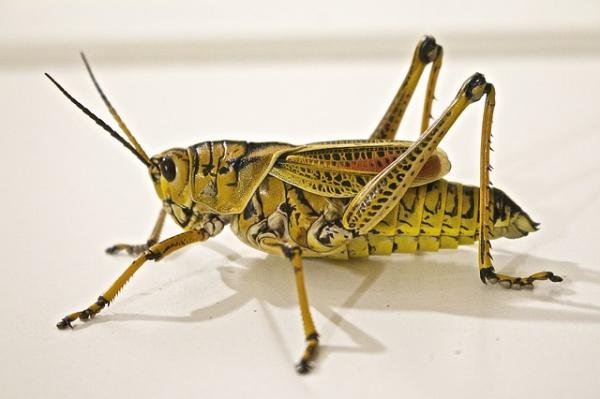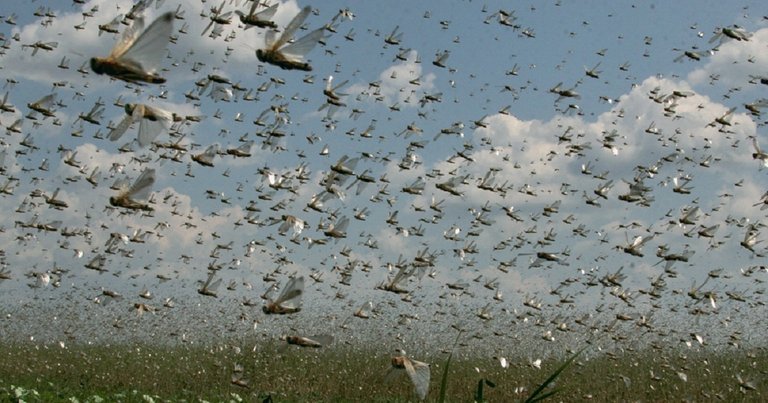
Lobster in full jump
PHOTO BY OSF / A. SHAY / ANIMALS ANIMALS EARTH SCENES>
Locusts are close to grasshoppers and are similar-looking insects. However, the behavior of the lobster can be completely different. Sometimes they are solitary insects with a lifestyle similar to that of the grasshopper, but they go through a phase called gregaria. When the environmental conditions are given to produce green plants and favor reproduction, the lobsters come together in large, wandering and voracious swarms.
Characteristics:
They have long hind legs and an oral apparatus to chew and eat leaves. They do not usually fly much even though they have wings. They move together in large groups of the same species and their activity is mainly nocturnal, using their antennae and large eyes to explore the terrain.

Reproduction:
In general, lobsters produce only one new annual generation. After mating, the female puts small groups of eggs on the ground or among the vegetation. Some species produce a special foam to protect their eggs. Young lobsters can not fly
until they become adults They change color when they are grouped, acquiring a bright orange, yellow and black tone.

Lobsters in action:
So far the oldest record of a plague of locusts dates back more than 2000 BC, according to the biblical account and is mentioned as the eighth plague that struck Egypt and ended with the last source of food that remained at that time, the crops. Although at the time, this story was thought terribly fanciful and not very credible, it is now recognized that the plague of locusts can kill millions of people because of the famine it causes when ending the agriculture of a region.
Some of the largest locust outbreaks occurred in the final decade of the 1980s. When locusts attack immediately before harvest, the repercussions can be devastating. By the end of the 1987 plague, it had reached 25 vulnerable countries, with monumental losses. Since then there have been some outbreaks, although no new pests have been developed.
The migratory and desert locusts (Locusta migratoria and Schistocerca gregaria) have caused devastating famines in parts of Africa and the Middle East by destroying vast cereal areas and other crops. When these insects become massive, their number can amount to more than 10,000 million. The road they travel depends, to a large extent, on the direction of the winds; if they blew into the sea, the whole mass of insects could drown.

Did you know?

Until a next opportunity!
Consultation references:
https://es.wikipedia.org/wiki/Acrididae
https://www.nationalgeographic.es/animales/langosta
https://www.geniolandia.com/13105313/las-diferencias-entre-langostas-saltamontes-y-cigarras
We @farms find this post educative and informative... thanks for sharing
Resteem
(to be a part of this community; ensure to always use #farms and #steemchurch for agricultural related post)
SteemChurch Farm ( @FARMS)
Excellent description of the lobsters
Thanks for the appreciation to my article!